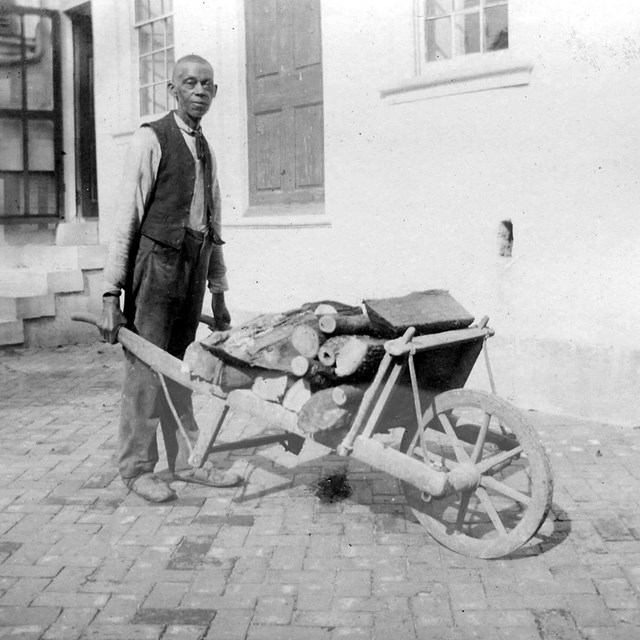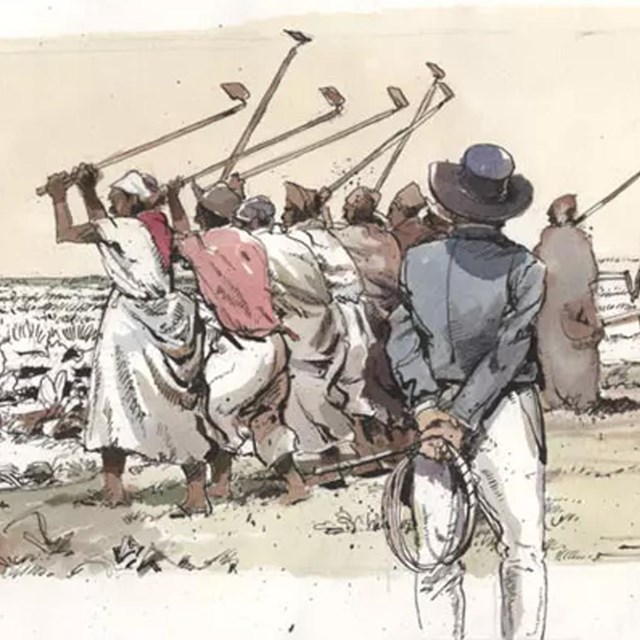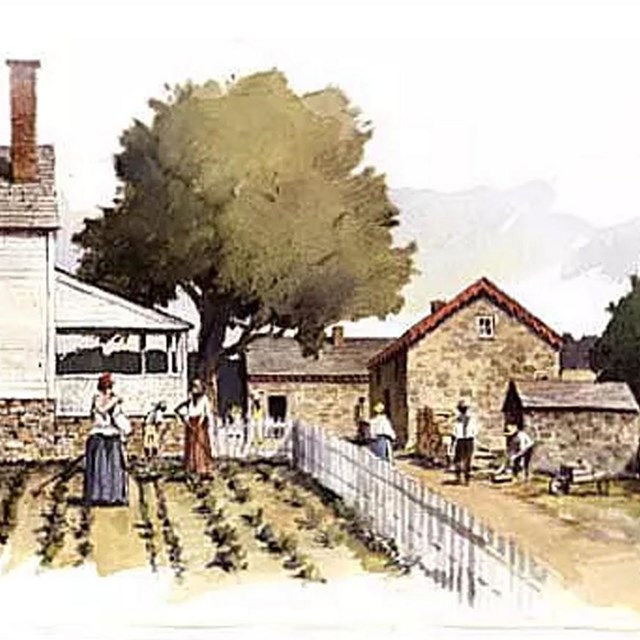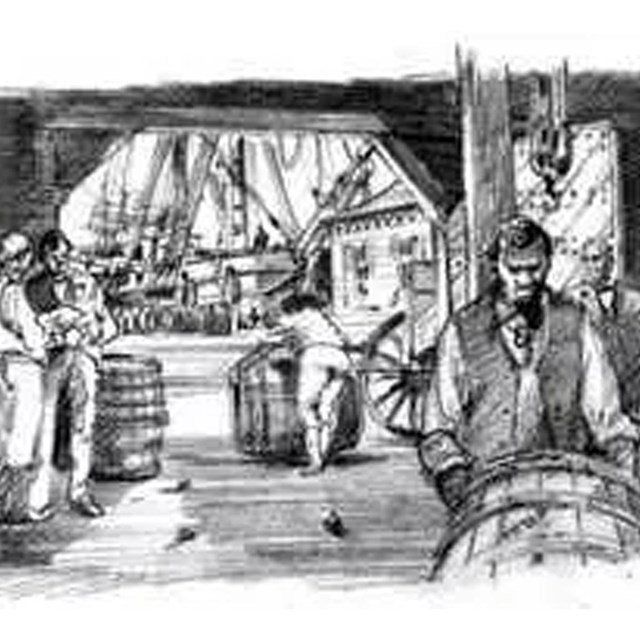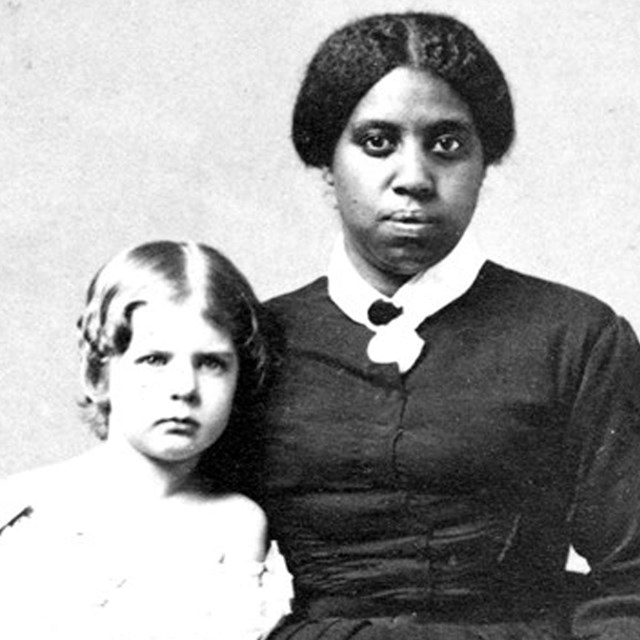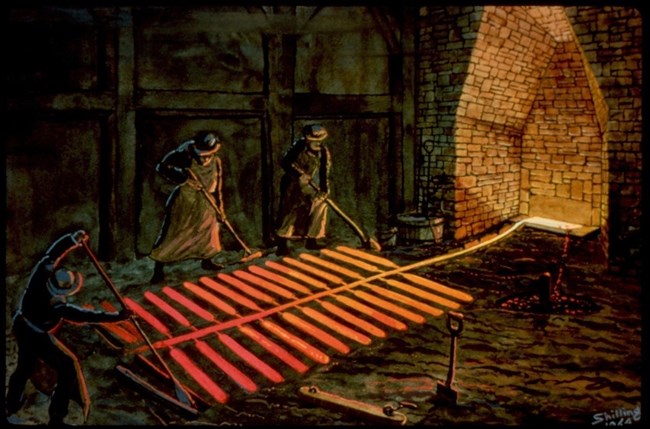
NPS/Harpers Ferry Center Timebooks from the 1770s for the colliers, who worked with charcoal at the furnace, give us the work schedule for enslaved people and indentured servants. They were expected to work a twenty-six-day month with only Sundays free, year after year. Dr. Randall Hulse, who was employed to care for ailing furnace workers, described general working conditions of the ironworks. In a letter dated February 22, 1777, to Charles Ridgely, Dr. Hulse described workers subjected to “a mean diet and barbarous usage” and a “wanton abuse of power.” He personally witnessed labor and punishment “excesses that call aloud for redress.” In many cases, these practices can only reasonably be defined as torture. Between November 1775 and December 1777, the daybooks recorded in the business category of “Profits and Loss” that five servants working at the forges died from the exertion of their forced labor. Historian Kent Lancaster has concluded that the conditions at Northampton were so harsh that, for enslaved individuals and indentured servants, “accidents resulting in broken bones, burns, or crushed feet were frequent.” Learn More
|
Last updated: June 18, 2025

